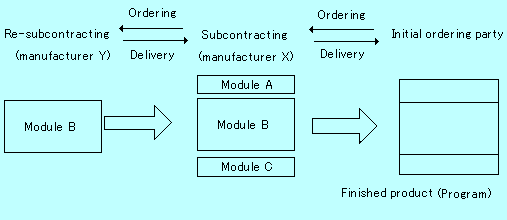- Home
- Japan IP News
Japan IP News
Expanded Definition of What Constitutes Indirect Infringement
Revised version
Article 101 (Acts construed as constituting infringement)
The following acts shall be deemed to be an infringement of a patent right or exclusive license:
(1)(no change)
in the case of a patent for an invention of a product, acts of manufacturing, assigning, leasing, importing or offering for assignment or lease of, in the course of trade, an article to be used exclusively for the manufacture of the product.
(2)(newly added)
in the case of a patent for an invention of a product, acts of manufacturing, assigning, leasing, importing or offering for assignment or lease of, in the course of trade, an article to be used for the manufacture of the product (excluding those articles which are distributed widely and commonly in Japan) which is indispensable for attaining the object of the patented invention, with the knowledge that the invention is patented and that the article will be used for the working of the patented invention.
(3)(previous section(2))
in the case of a patent for an invention of a process, acts of manufacturing, assigning, leasing, importing or offering for assignment or lease of, in the course of trade, an article to be used exclusively for the working of such invention.
(4)(newly added)
in the case of a patent for an invention of a process, acts of manufacturing, assigning, leasing, importing or offering for assignment or lease of, in the course of trade, an article to be used for the working of such invention (excluding those articles which are distributed widely and commonly in Japan) which is indispensable for attaining the object of the patented invention, with the knowledge that the invention is patented and that the article will be used for the working of the patented invention.
Reasons
Under the Japanese Patent Law, even if all of the elements for a patented product or process are not commercially worked, acts by an unauthorized party for preparing or assisting in the supplying of an element (exclusive element) to be used exclusively in manufacturing such a patented product or working such a patented process are construed as acts of infringing the patent right for the patented product or process (indirect infringement), for the purpose of improving the effectiveness of the patent right protection.
With respect to a staple element of the patented invention which can also be used for other than the patented invention, indirect infringement was never established under the precious law even if a supplier of such staple element had acted in bad faith. Therefore, there have been only few litigation cases wherein an assertion of indirect infringement has been accepted, and thus stronger protection of the patentees has been demanded in this respect.
Under the new law, even if the staple element for a patented invention is not an exclusive element, acts of commercially supplying staple element with the knowledge that the staple element will be used for manufacturing patented product or for working a patented process (so-called "bad faith") will also be construed as acts of indirect infringement.
Example
According to the new Patent Law, the following act is considered to constitute indirect infringement.
It is usual for a software program to be divided into several parts (modules) and manufactured by a plurality of manufactures as shown in the illustration below. The final product (a software program) is a patented invention and the module B is not an exclusive element to be used only for manufacturing the final product. In this case, the act by the manufacturer Y of commercially manufacturing or supplying the module B constitutes indirect infringement, if the module B is indispensable for attaining the object of the patented invention and if the manufacturer Y acts with the knowledge that the module B will be used for the working of the patented invention.

